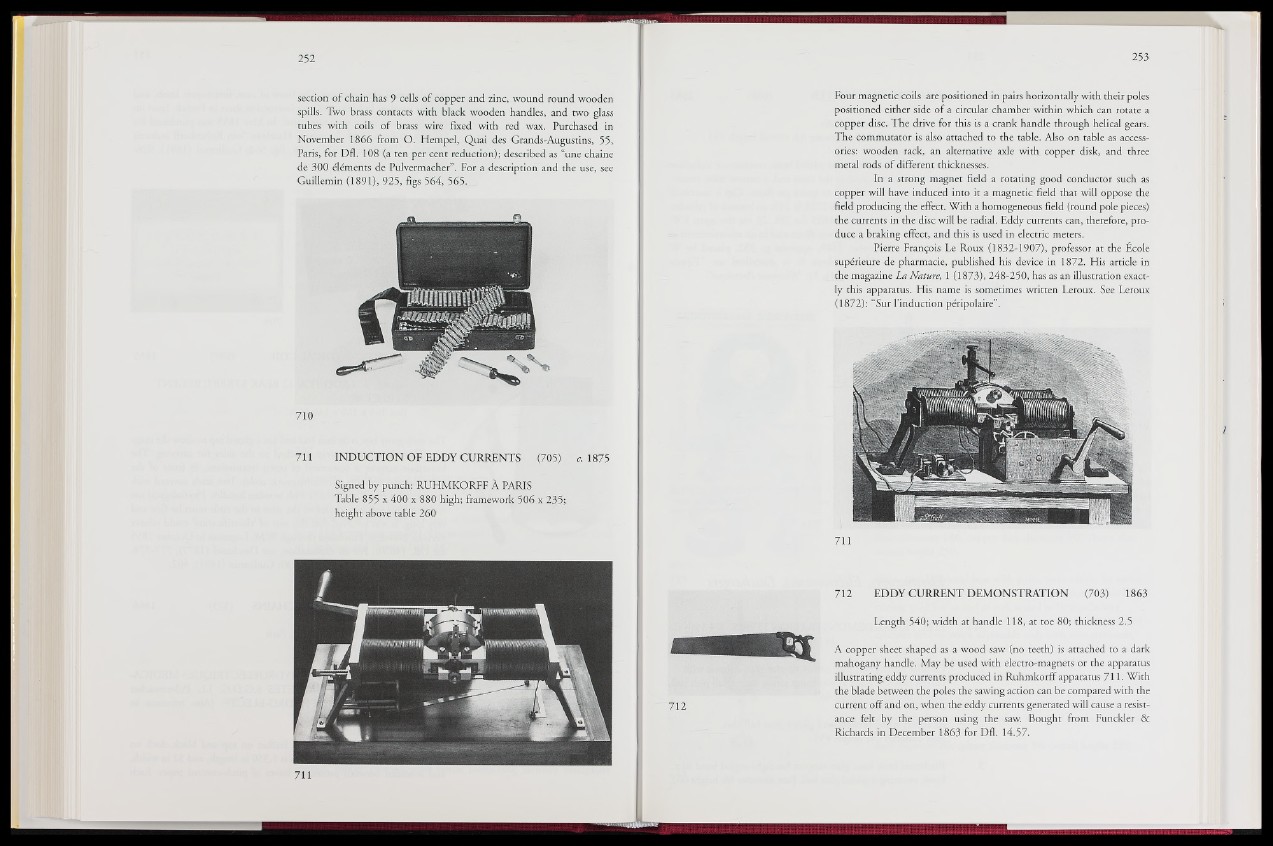
section of chain has 9 cells of copper and zinc, wound round wooden
spills. Two brass contacts with black wooden handles, and two glass
tubes with coils of brass wire fixed with red wax. Purchased in
November 1866 from O. Hempel, Quai des Grands-Augustins, 55,
Paris, for Dfl. 108 (a ten per cent reduction); described as “une chaine
de 300 éléments de Pulvermacher”. For a description and the use, see
Guillemin (1891), 925, figs 564, 565.
710
711 INDUCTION OF EDDY CURRENTS (705) / c. 1875
Signed by punch: RUHMKORFF A PARIS
Table 855 x 400 x 880 high; framework 506 x 235;
height above table 260
Four magnetic coils are positioned in pairs horizontally with their poles
positioned either side of a circular chamber within which can rotate a
copper disc. The drive for this is a crank handle through helical gears.
The commutator is also attached to the table. Also on table as accessories:
wooden rack, an alternative axle with copper disk, and three
metal rods of different thicknesses.
In a strong magnet field a rotating good conductor such as
copper will have induced into it a magnetic field that will oppose the
field producing the effect. With a homogeneous field (round pole pieces)
the currents in the disc will be radial. Eddy currents can, therefore, produce
a braking effect, and this is used in electric meters.
Pierre François Le Roux (1832-1907), professor at the Ecole
supérieure de pharmacie, published his device in 1872. His article in
the magazine La Nature, 1 (1873), 248-250, has as an illustration exactly
this apparatus. His name is sometimes written Leroux. See Leroux
(1872): “Sur l’induction péripolaire”.
712 EDDY CURRENT DEMONSTRATION (703) 1863
Length 540; width at handle 118, at toe 80; thickness 2.5
A copper sheet shaped as a wood saw (no teeth) is attached to a dark
mahogany handle. May be used with electro-magnets or the apparatus
Illustrating eddy currents produced in RuhmkorfF apparatus 711. With
the blade between the poles the sawing action can be compared with the
current off and on, when the eddy currents generated will cause a resistance
felt by the person using the saw. Bought from Funckler &
Richards in December 1863 for Dfl. 14.57.